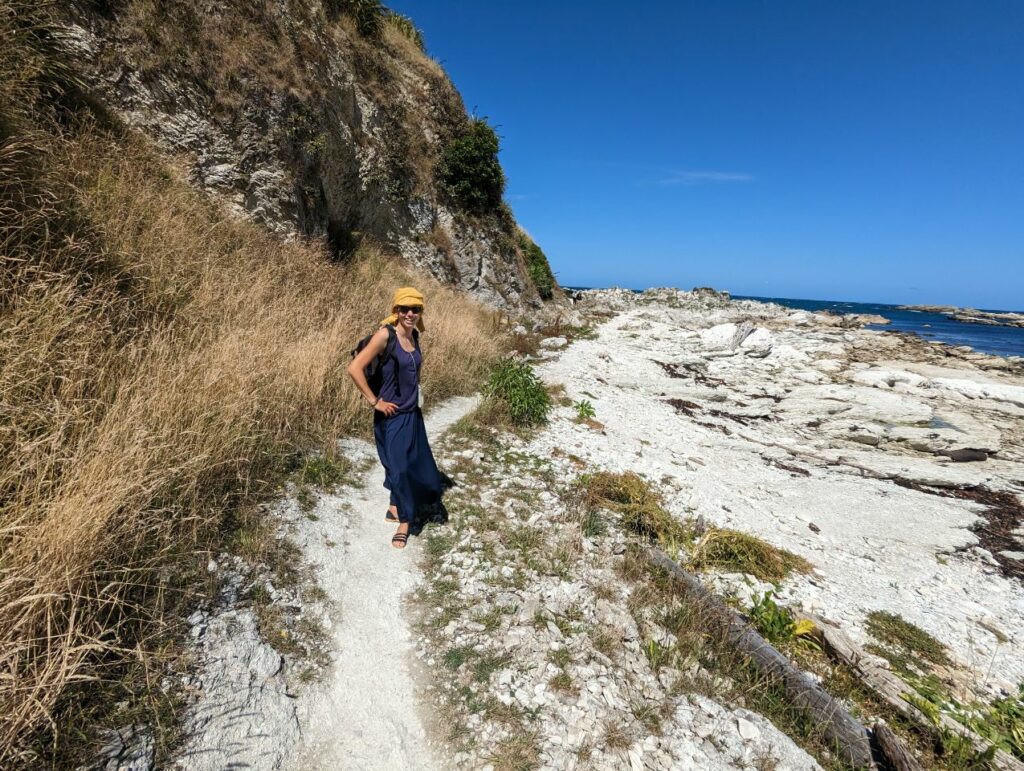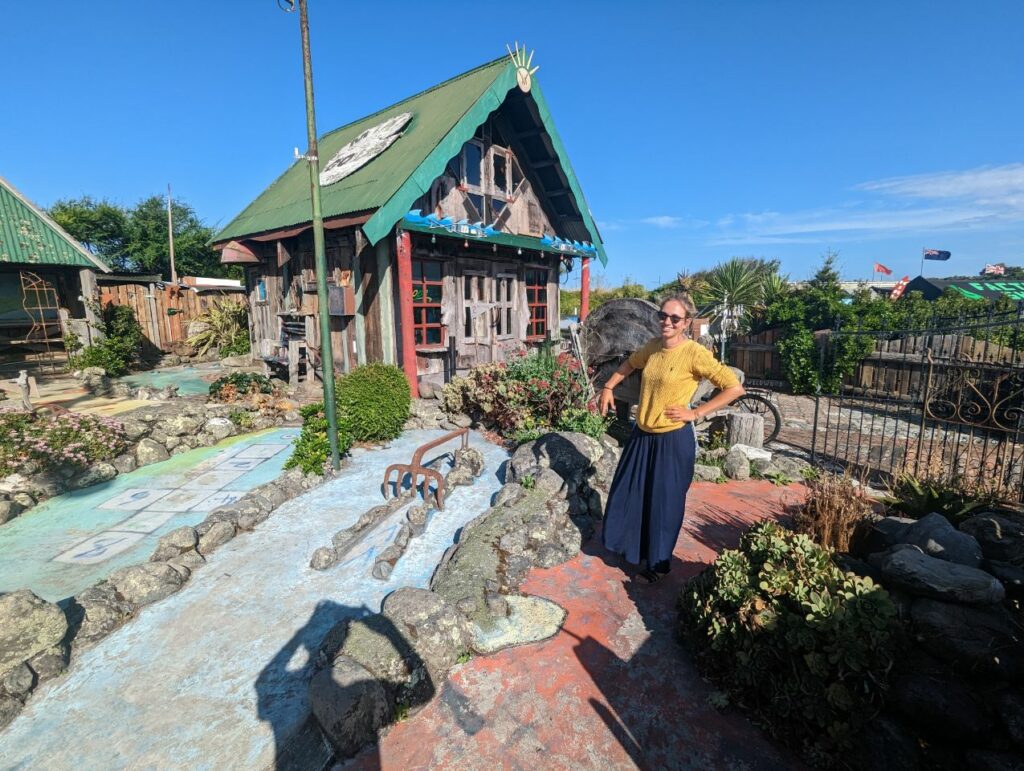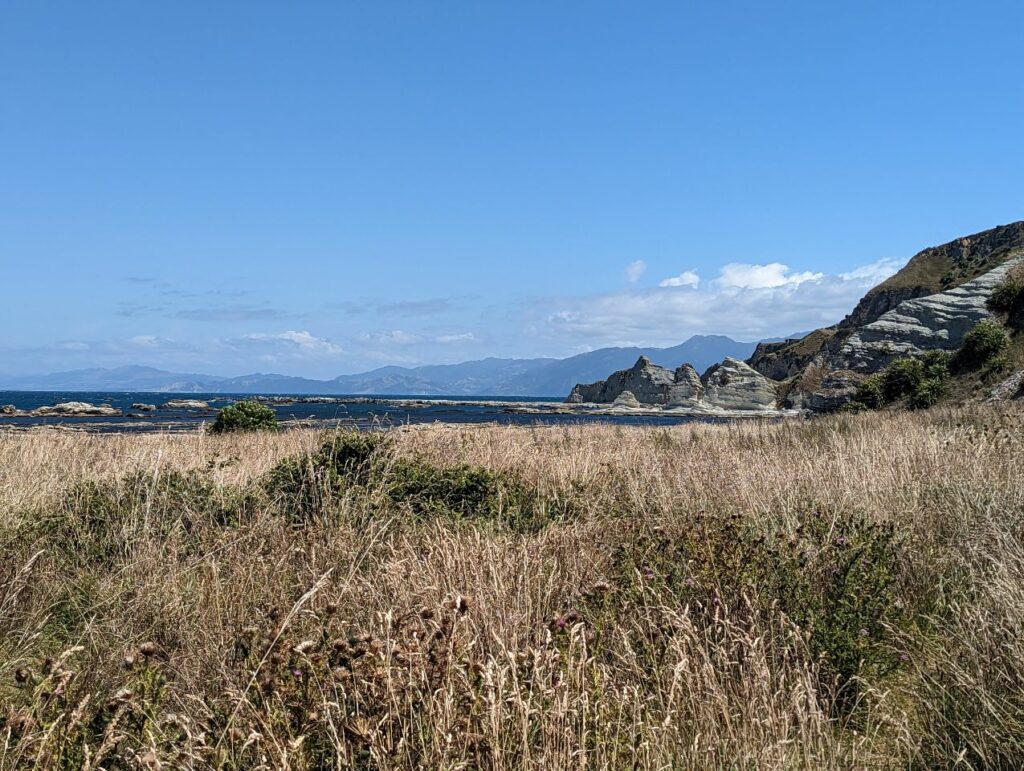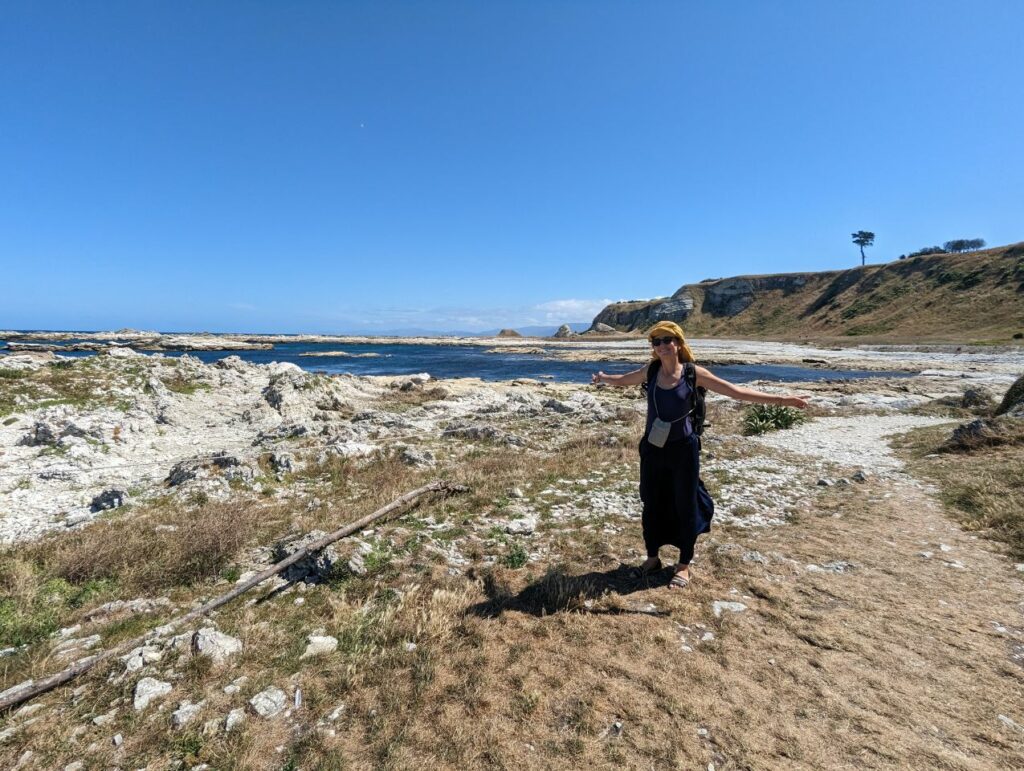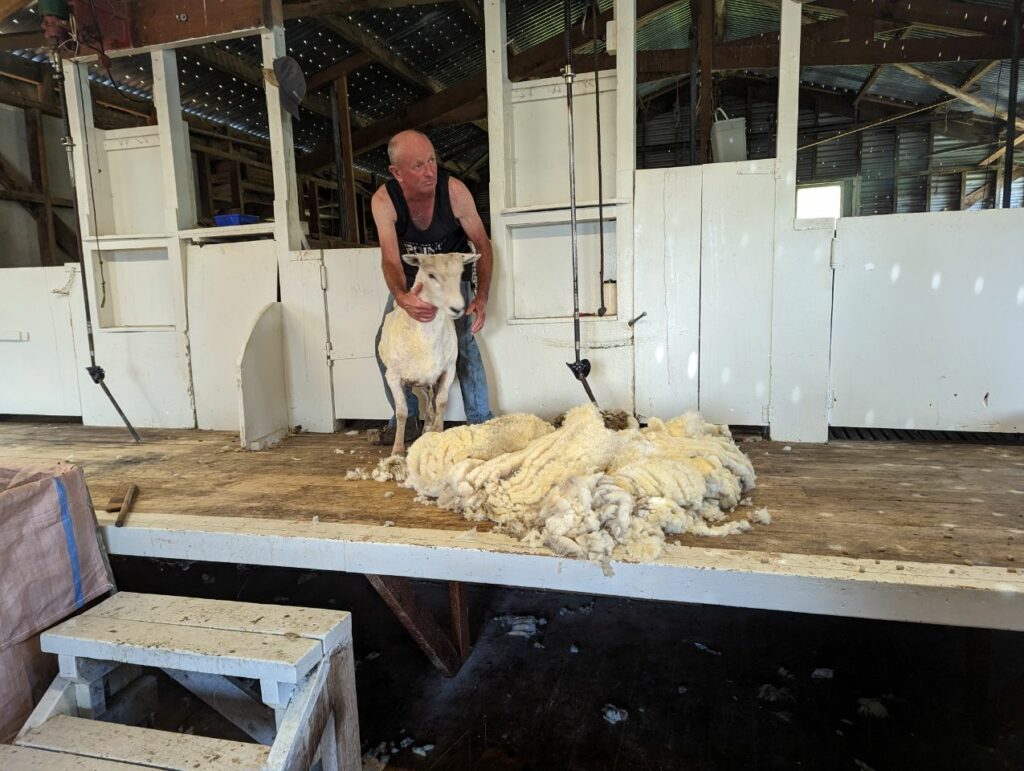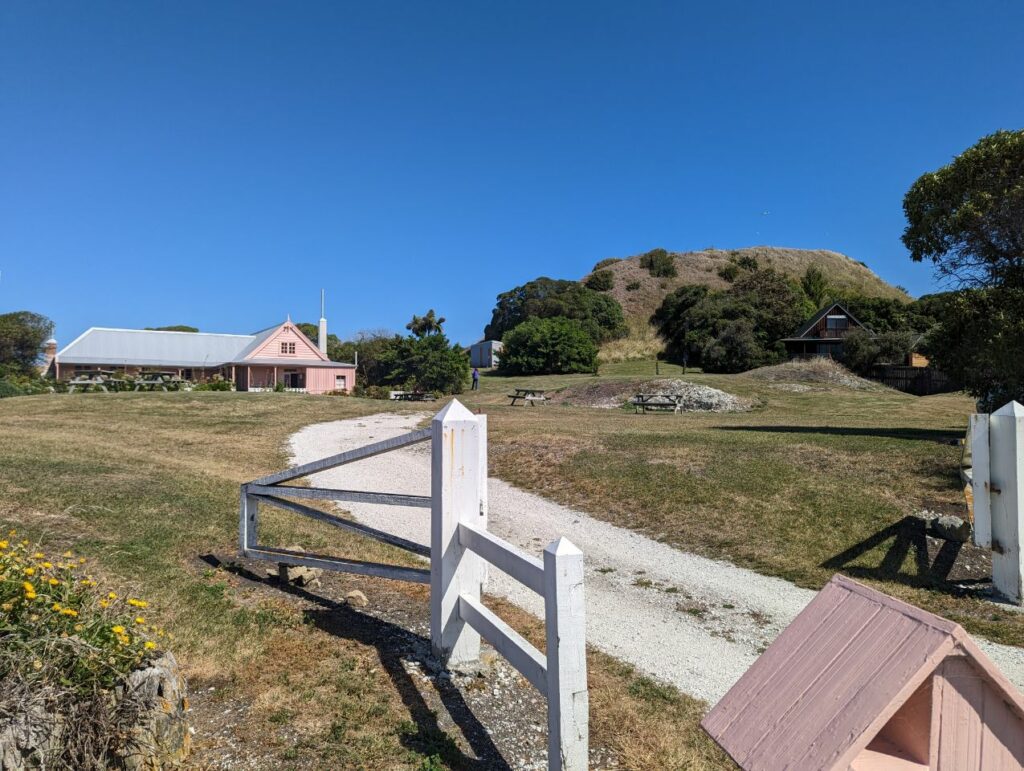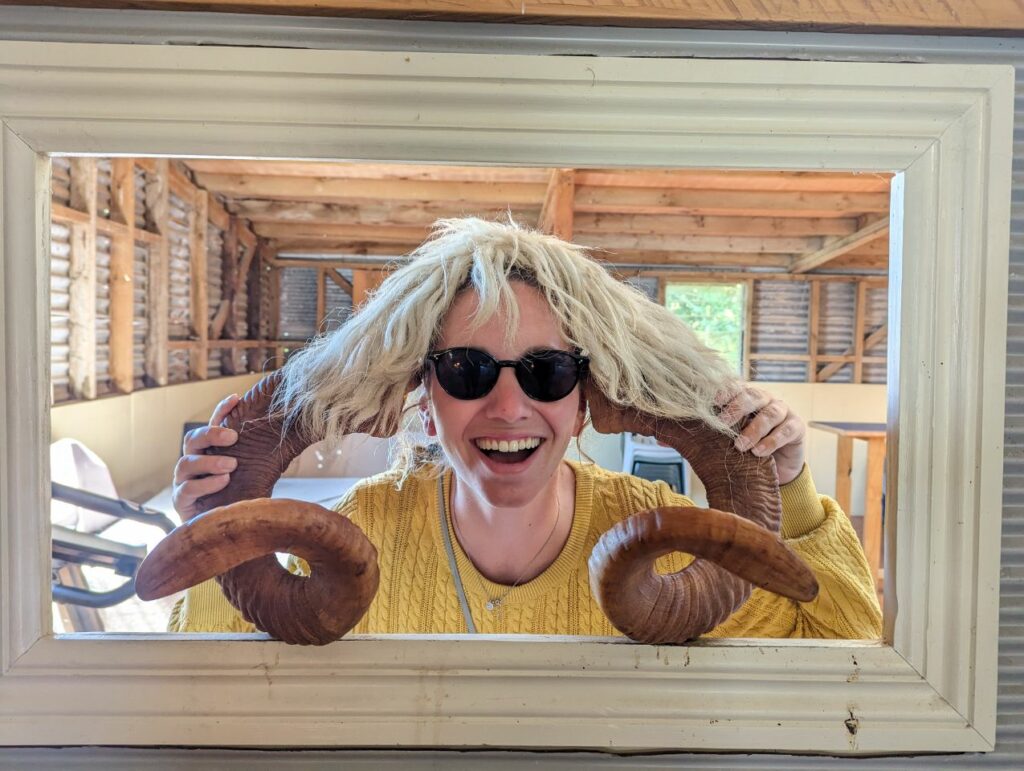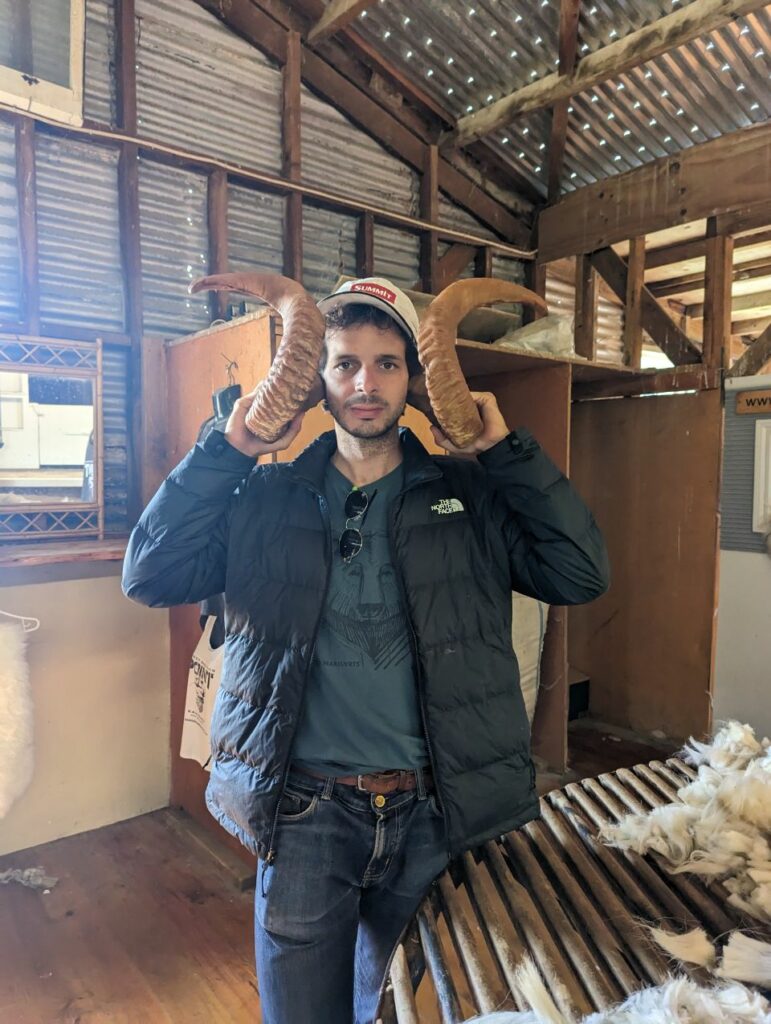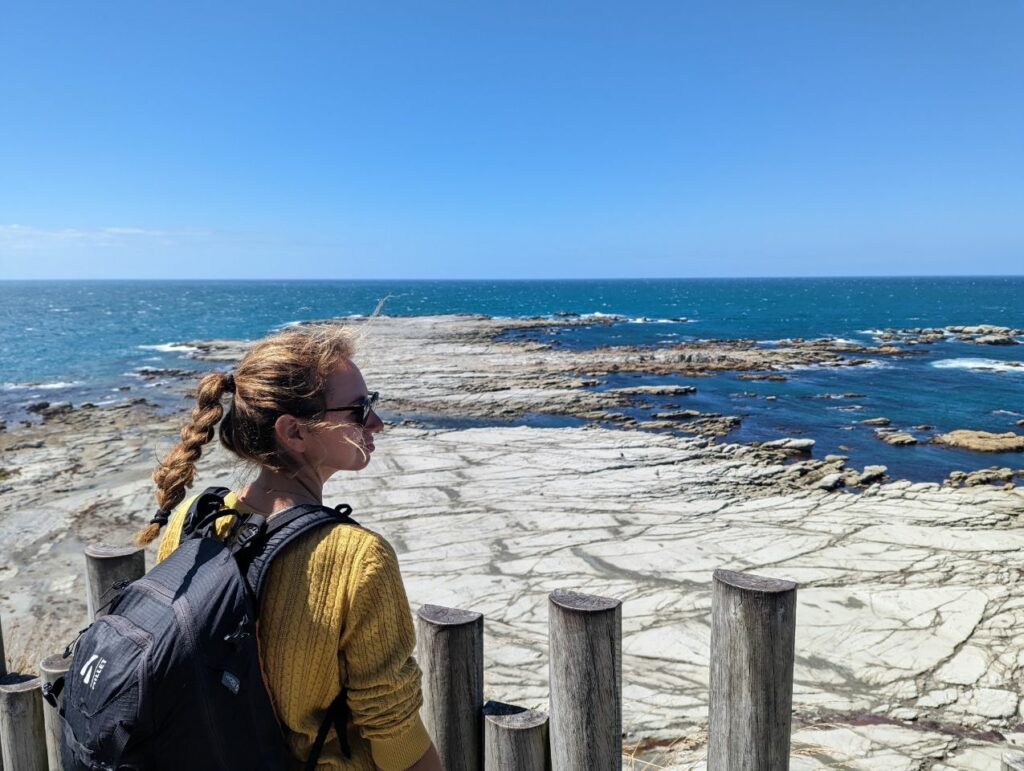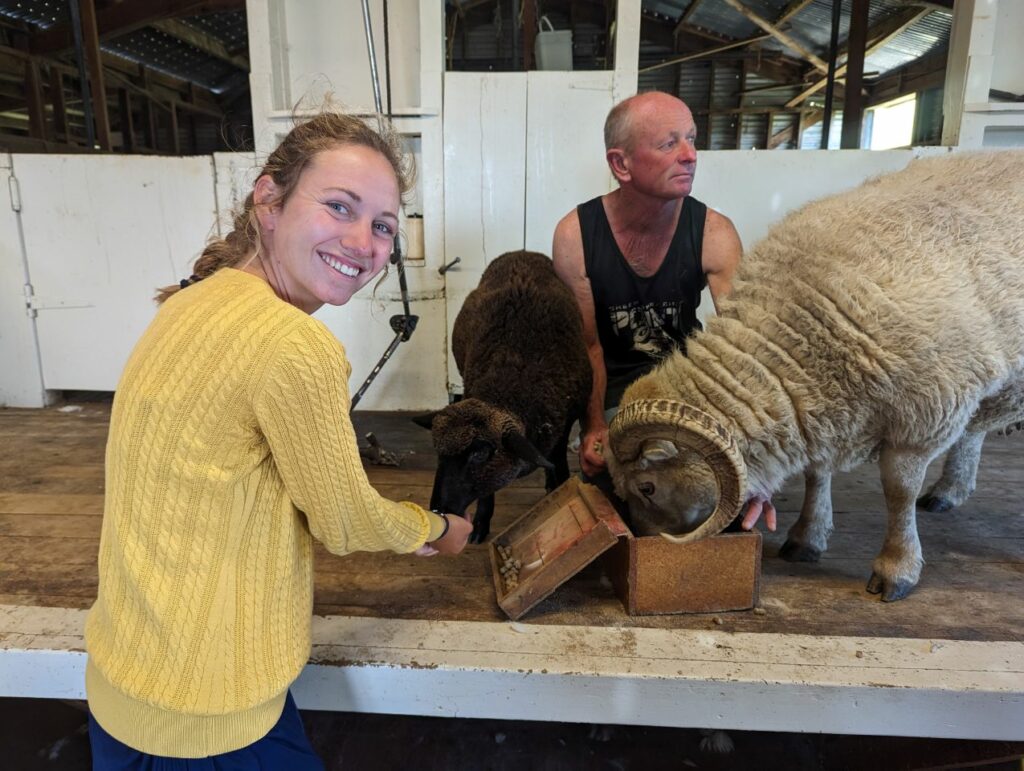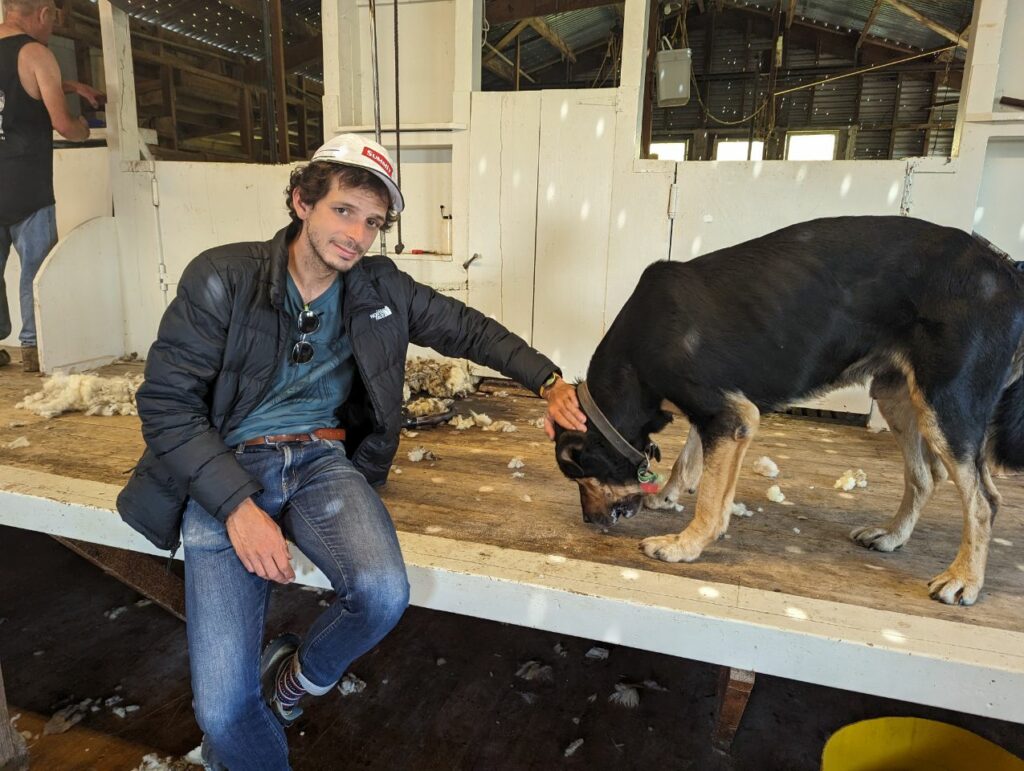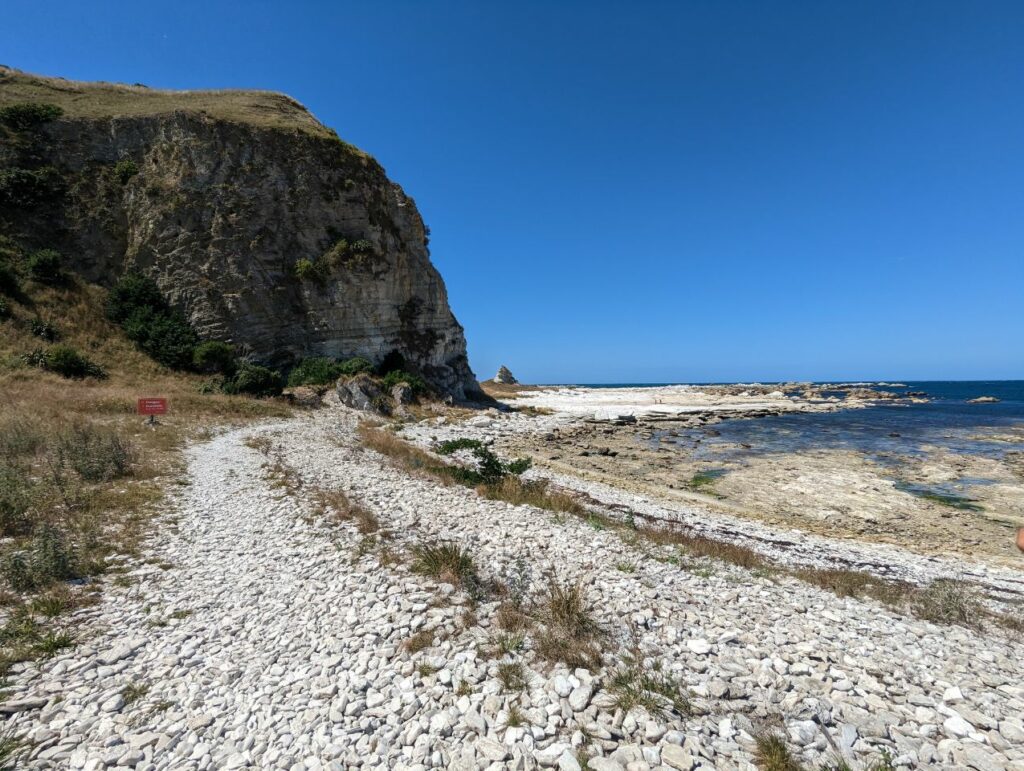Aujourd’hui c’est pause à Kaikoura ! On commence par un gros breakfast avant d’aller nager avec les dauphins mais annulé à cause du vent ! 🙁 Du coup on va regarder un mouton chez son coiffeur et on se fait une petite marche le long de la côté où il y a quelques phoques qui font bronzette Retour en ville autour dune petite glace avant de se faire une partie de mini golf ( sur un terrain hyper nul)!! On décide de prolonger d’une nuit notre séjour à Kaikoura car c’est sympa et on a le temps!
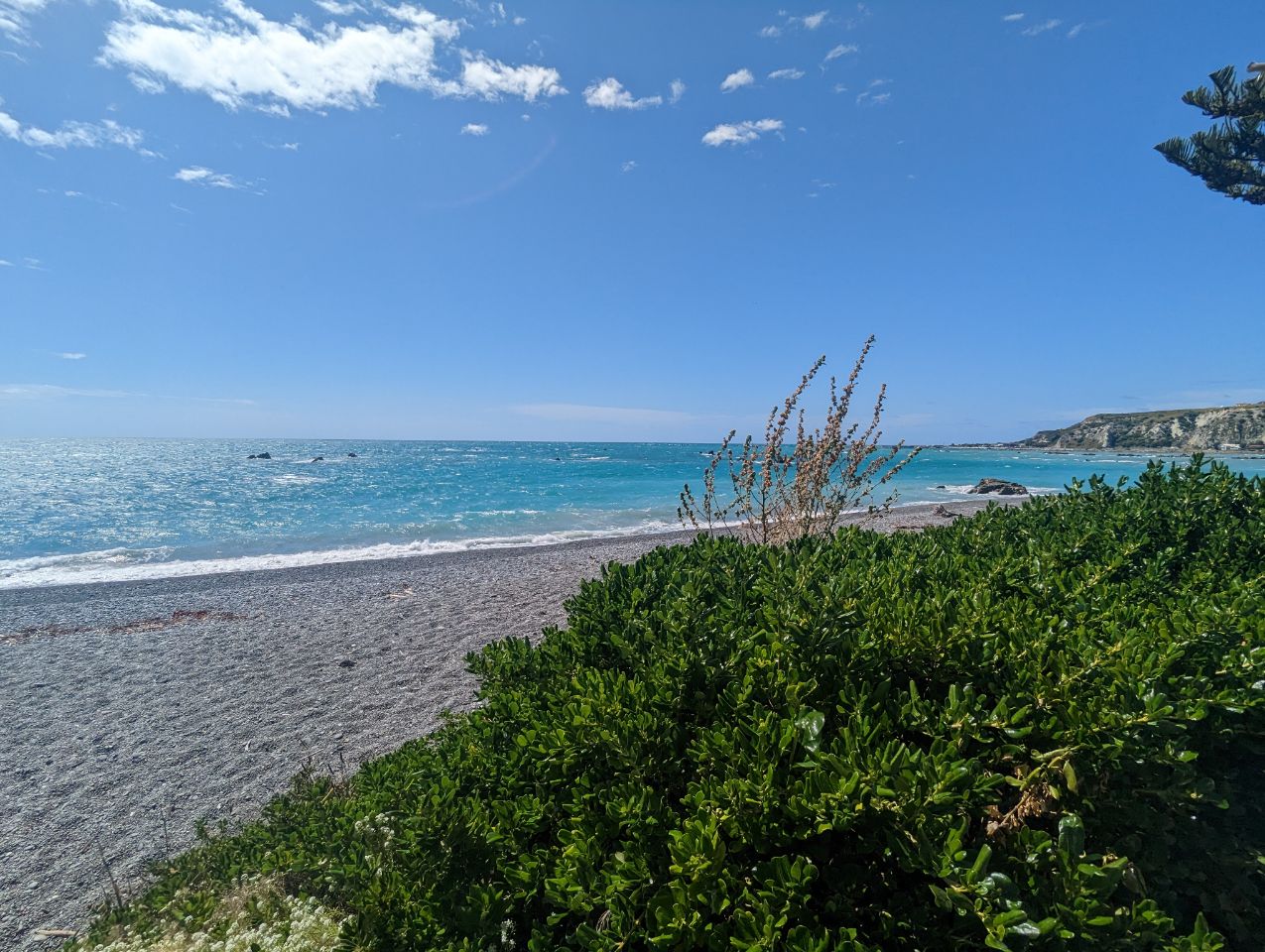
KAIKOURA PENINSULA
10 FEBRUARY 2023
The Kaikōura Peninsula is located in the northeast of New Zealand’s South Island. It protrudes 5 kilometres (3.1 mi) into the Pacific Ocean. The town of Kaikōura is located on the north shore of the peninsula. The peninsula has been settled by Maori for approximately 1000 years, and by Europeans since the 1800s, when whaling operations began off the Kaikōura Coast. Since the end of whaling in 1922 whales have been allowed to thrive and the region is now a popular whale watching destination.
The Kaikōura Peninsula is made up of limestone and mudstone which have been deposited, uplifted and deformed throughout the Quaternary. The peninsula is situated in a tectonically active region bounded by the Marlborough Fault System.
History[edit]
Maori oral history and tradition describes the demi-god ancestor Māui standing on Kaikōura Peninsula where he « fished up » or discovered the North Island. An old name for the South Island is Te Waka a Māui (the canoe of Maui), and the name of the North Island is Te Ika a Māui (the fish of Māui).[1] The peninsula has been inhabited by Māori for the best part of 1000 years. They used it as a base for hunting moa, and also harvested the plentiful crayfish which are found along the shore. Strategic positions on the high terraces were fortified and those fortifications can still be seen in lidar imagery of the peninsula[2]
During the 19th century, European whaling stations were established in the area. In more recent times, the whales that visit the coast off the peninsula have been allowed to thrive, and whale-watching makes the area a popular ecotourism destination. Whales frequent these coastal waters because squid and other deep-sea creatures are brought from the deep Hikurangi Trench to the surface by the combination currents and steeply sloping seafloor.

